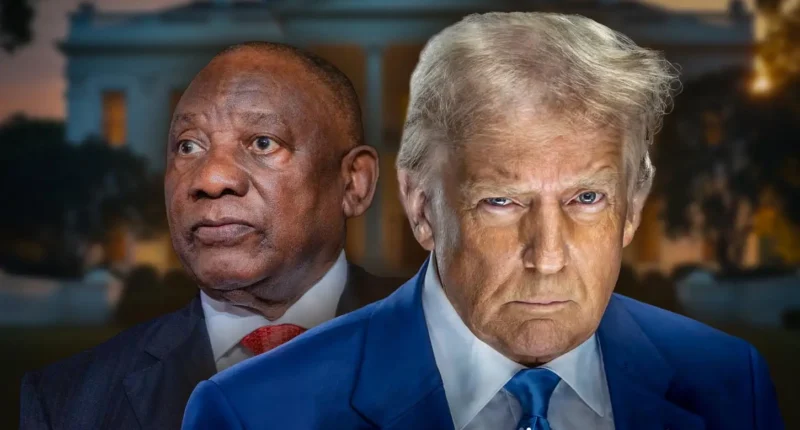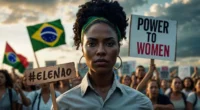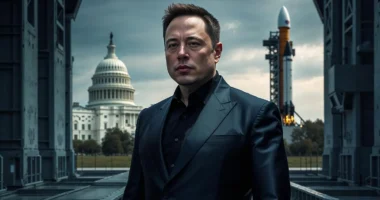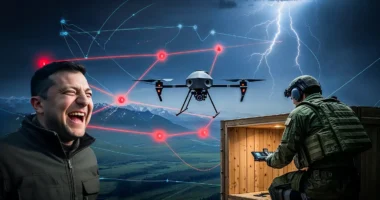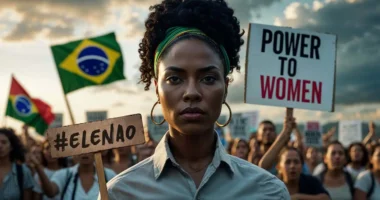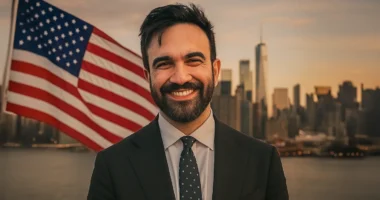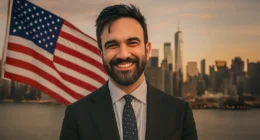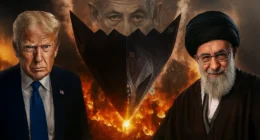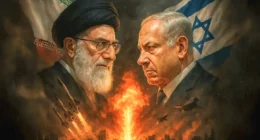Trump’s divisive meeting to discuss allegations of “white genocide” with South African president.
Trump showed South African President Cyril Ramaphosa videos and other materials allegedly claiming a “genocide” against white people in South Africa in a diplomatic incident on May 21, 2025, during a White House meeting. Experts and fact-checkers have extensively refuted these assertions. The conflict arose during a visit meant to strengthen ties.
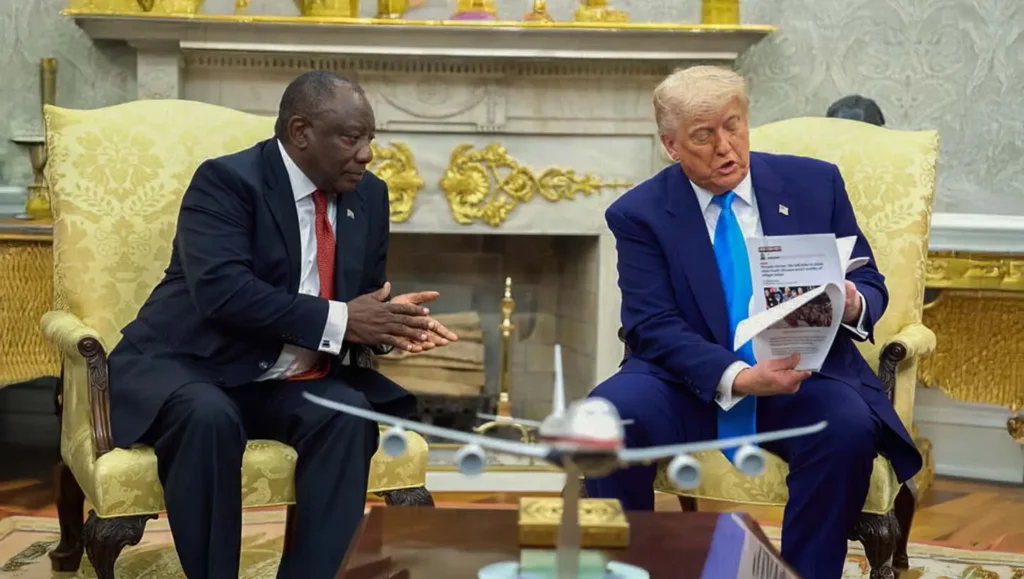
To display video footage he claimed showed the graves of slain white farmers, Trump turned down the Oval Office lights. Strongly rejecting these assertions, Ramaphosa responded factually.
Between the US and South Africa, the incident has exacerbated already existing problems; it has also been blamed for fueling racial tensions at top levels of international diplomacy and conspiracy theories.
Background and Environment of Relations Between the US and South Africa
The contentious conference happened at a time when Trump’s government was worsening diplomatic relations between the US and South Africa. Many times over many issues, Trump has attacked South Africa.
The most recent was following Ramaphosa’s January 2025 signature of the Expropriation Act into legal form. According to Trump, the law treats white South Africans “discriminatory”. Two instances of how the tensions have surfaced in actual life are Trump’s decision to cut off money for the U.S. President’s Emergency Plan for AIDS Relief and his administration’s criticism of government policies of South Africa.
The United States expelled South African Ambassador Ebrahim Rasool in March 2025 for remarks made in a webinar assembled by the Mapungubwe Institute for Strategic Reflection.
This marked the lowest point in the bilateral relationship. At that event, Rasool said, Trump’s strategy was “an assault on incumbency, those who are in power, by mobilizing a supremacism against the incumbency at home, and I think I’ve illustrated abroad also.” This removal set the tone for Ramaphosa’s tense visit to the White House later that same week and worsened already strained relations between the two countries.
Audible is an Audio Books Platform, where you can find any audio book of your interests including Stories, Histories and much more. Try Audible 100% Free for 30 days, Click Here to Subscribe today .

The Tense White House conference.
Originally, Ramaphosa’s visit to Washington was seen as an opportunity to mend relations between the US and South Africa by reseting. In an attempt to appeal to Trump’s well-known passion of golf, the president of South Africa deliberately included two well-known South African golfers in his group and handed Trump a comprehensive book on the golf courses in his nation.
Trump complimenting the South African golfers present and engaging in what appeared to be a friendly diplomatic chat kicked off the meeting on a positive note.
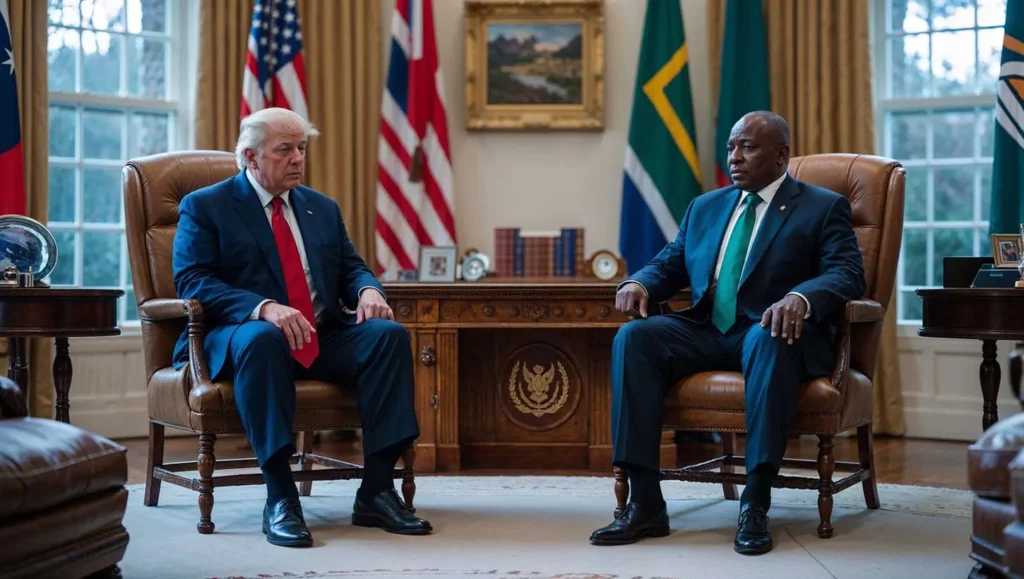
But things took a very different turn in the Oval Office when Trump asked for the lights to be turned off so he could exhibit what he claimed to be evidence of systematic abuse of white farmers in South Africa.
Words in a contentious anti-apartheid song, “Shoot the boer [Afrikaner], Shoot the farmer” are uttered by well-known South African opposition leader Julius Malema on the video montage. Trump also displayed a video of what he claimed to be a field of crosses honoring the graves of white farmers. He omitted mentioning the location of the video’s filming; independent sources have not verified its authenticity.
At this point in the speech, Trump provided Ramaphosa printed copies of news items he claimed depicted attacks on white people living in South Africa. Trump underlined his point sharply as he read the stories by stressing “death, death” and “here are burial sites all over the place”.
There are four white farmers buried here. About the situation generally, the US president said, “People are fleeing South Africa for their own safety… their land is being taken away and in many cases they’re being killed.”
External Sources:
https://www.bbc.com/news/articles/ce9vvljen0xo
https://news.sky.com/story/trump-ambushes-south-african-president-by-playing-video-alleging-genocide-in-south-africa-13372206
Ramaphosa’s Response and Resistance
President Ramaphosa spoke in a measured but forceful manner and remained cool under pressure to refute Trump’s charges. According to Trump, the video depicted the burial sites of almost a thousand white farmers.
“I’d like to know where that is since I’ve never seen this [the claimed burial site in the video]” Ramaphosa said. That response revealed that the evidence Trump was citing was flimsy and that it appeared as though not even the president of South Africa knew what the images were meant to reveal.
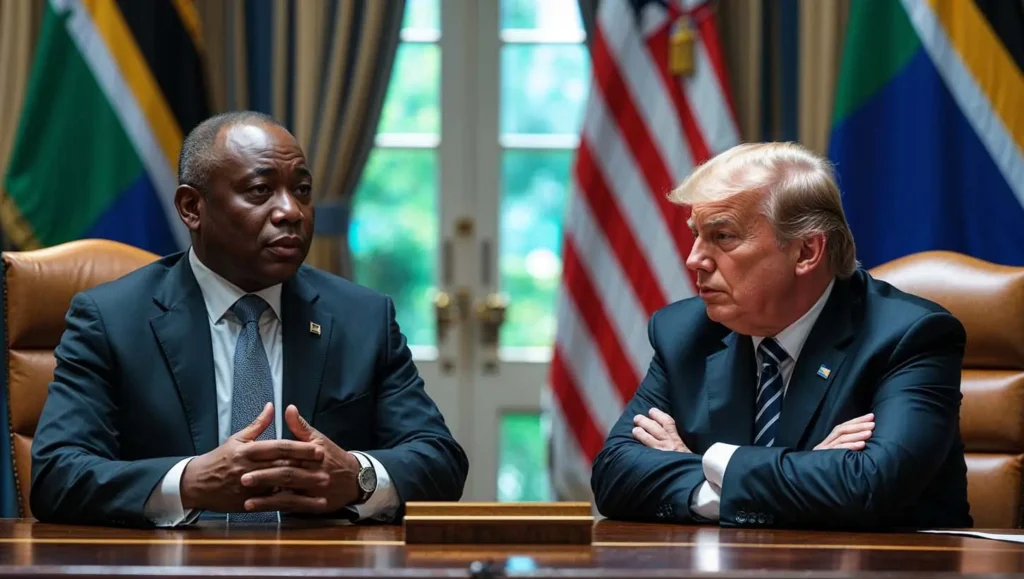
https://shadesofpolitics.com/wp-content/uploads/2025/05/Ramaphosa-Calmly-Responding.webp
In response to the more broad assertions, Ramaphosa clarified South Africa’s democratic structure and the differences between official government pronouncements and those of opposition leaders.
It was not government strategy, he remarked, “What you saw and the speeches that were being given.” Being a multi-party democracy, South Africa allows everyone to express their opinions and requires each political party to abide by its own guidelines.
Furthermore, occasionally or regularly those guidelines do not coincide with government instructions. He made it abundantly clear that “a small minority party allowed to exist under our constitution” produced the offensive language found in the videos. He underlined, nevertheless, that “our government policy is completely, completely opposite what he was saying.”
By discussing the actual crime rates in South Africa, Ramaphosa most importantly challenged Trump’s major point of view. He said, “black individuals are significantly more likely than their white counterparts to be victims of violence in South Africa”.
Ramaphosa stayed to his point of view and said he was ready to discuss reasonable security concerns when Trump cut him off to say, “The farmers are not black.”
External Sources:
https://english.news.cn/20250522/6bff963930764be397984bd01f045639/c.html
Reaction and Interpretive Analysis
News sources and analysts all around have mostly been critical of Trump’s presentation, labeling the material he provided “conspiracy theories” and “misinformation.” CNN remarked, “of the list of conspiracy theories did brought out at Trump’s meeting with South African President Cyril Ramaphosa today, almost everything has been debunked”
The network said some South Africans claimed the material appeared to be “AfriForum propaganda” from “a White Afrikaner lobby group criticized as a White nationalist group.”
Particularly his “ambush of Ukraine’s President Volodymyr Zelenskyy in February,” people noted similarities between this event and Trump’s past diplomatic spats. People are concerned about how this trend of using contentious materials and conspiracy theories in high-level diplomatic meetings would affect the credibility and relations with other countries of the United States.
Particularly with relation to programs for refugees, the U.S. State Department has kept supporting the general policy of the government toward South Africa. Tommy Pigott, the Deputy Spokesperson, said that South African immigrants arriving to the United States satisfy the legal criteria for Asylum, stating that these people fit the same legal criteria as others, so addressing President Trump’s concerns over South Africa.
More in mind Main Diplomatic Consequences
The controversial meeting has already altered the future diplomatic interaction between the two nations. Trump would not be attending the Group of 20 (G20) leaders gathering later in 2025, according to U.S. Secretary of State Marco Rubio.
Rubio said, “We decided not to participate in this year’s G20 hosted by South Africa, either at the level of the Ministry of Foreign Affairs or at the level of the president, and this was largely due to some of these issues that they put on their agenda and which, as we think, do not reflect the priorities of this administration.”
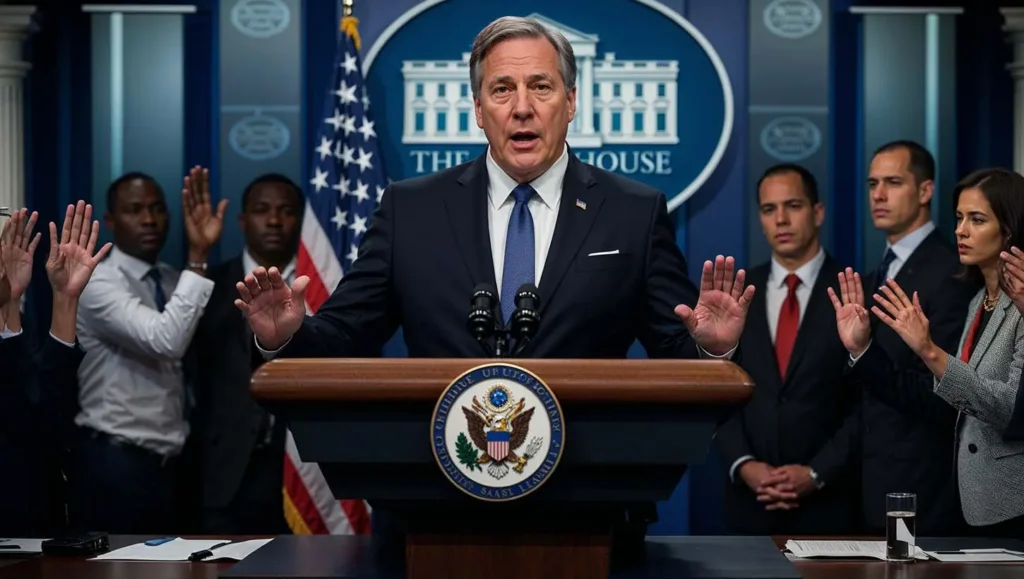
https://shadesofpolitics.com/wp-content/uploads/2025/05/White-House-Decision-on-G20-Withdrawal.webp
The Trump government has leveled a lot of charges, and South Africa’s government has responded with official comments supporting their policies and challenging the data supporting the American objections.
Concerned about “what seems to be a campaign of misinformation and propaganda aimed at misrepresenting our great nation,” the country’s Ministry of International Relations and Cooperation said in February, “It is disappointing to observe that such narratives seem to have found favor among decision-makers in the United States of America,” it said.
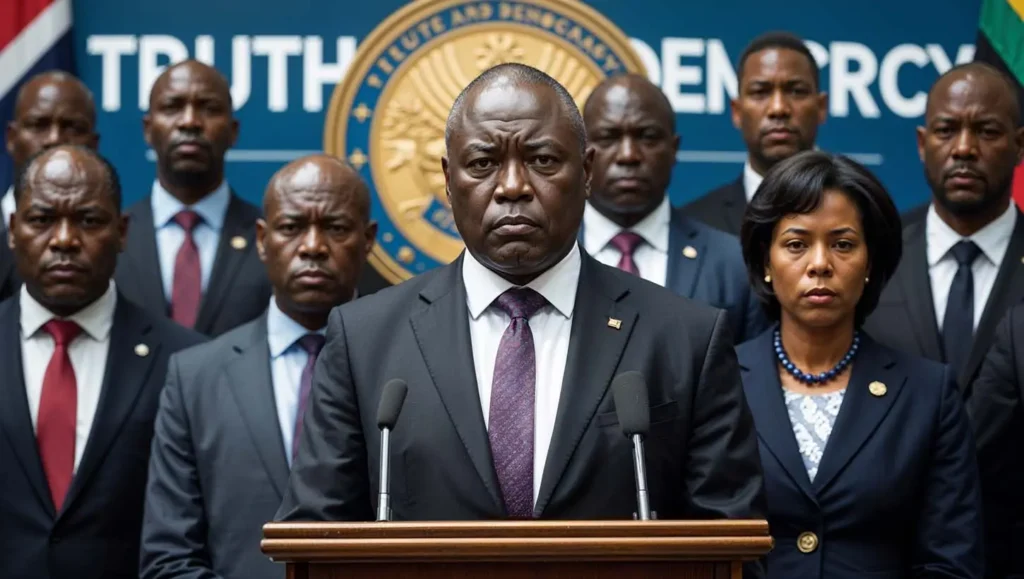
https://shadesofpolitics.com/wp-content/uploads/2025/05/South-African-Government-Response.webp
The government of South Africa has also attacked Trump’s choice to halt aid, claiming it “lacks factual accuracy and fails to recognize South Africa’s profound and painful history of colonialism and apartheid.”
This response captures the whole picture of South Africa’s challenging shift from apartheid to democracy. It also implies that American complaints ignore the past and present issues with racial and economic disparity in the nation.
Wind-up of The Story
Diplomatic relations between the US and South Africa suffered much at the meeting between Presidents Trump and Ramaphosa at the White House on May 21, 2025. It also emphasizes how risky it is in high-level international diplomacy to apply false knowledge and conspiracy theories.
Apart from not advancing any real American interests, Trump’s decision to shock his South African counterpart with untrue allegations regarding “white genocide” tarnished American diplomatic presence on the continent.
The fact that Ramaphosa’s response was cool but firm demonstrated how difficult it is for world leaders handling misleading information at the highest levels of diplomacy.
His honest answers and eagerness to communicate despite the other person’s rudeness revealed that he was a professional diplomat safeguarding the policies and image of his nation. It illustrates how racial narratives and conspiracy theories might sour ties between nations and complicate diplomatic approaches to handle actual issues between nations.
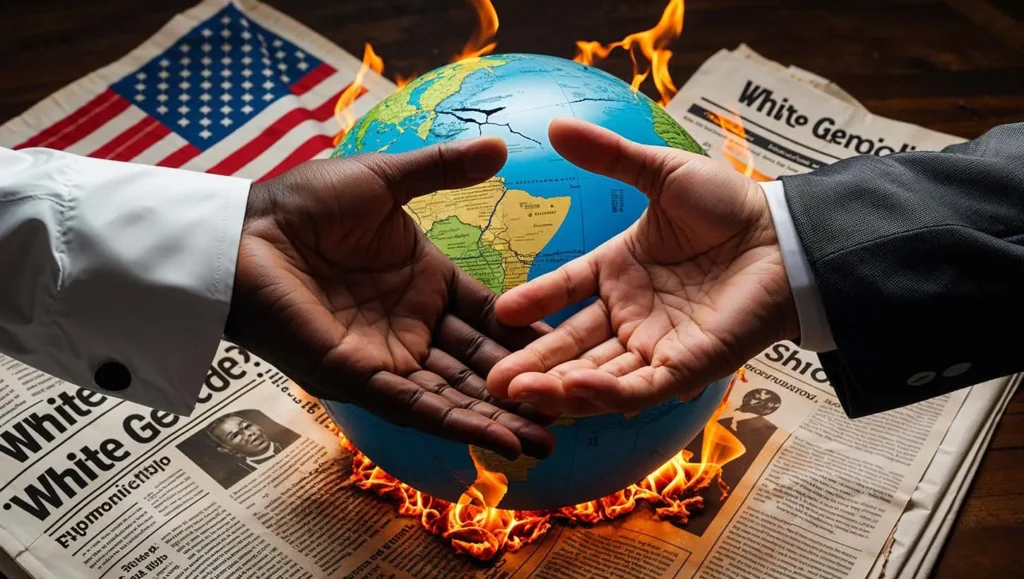
This diplomatic episode affects more than only US-South African ties. It also influences America’s position in Africa and its capacity to cooperate constructively on issues of mutual importance with that continent.
People all around will be monitoring diplomatic ties as things evolve to see if they can be resolved and if future negotiations could center on actual policy issues rather than narrative conflicts and conspiracies.
